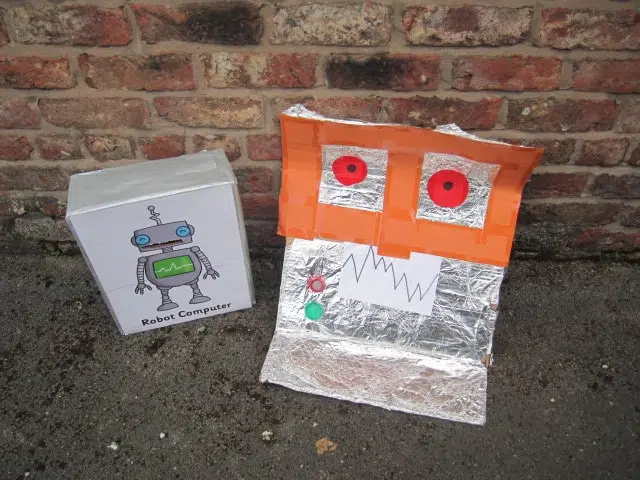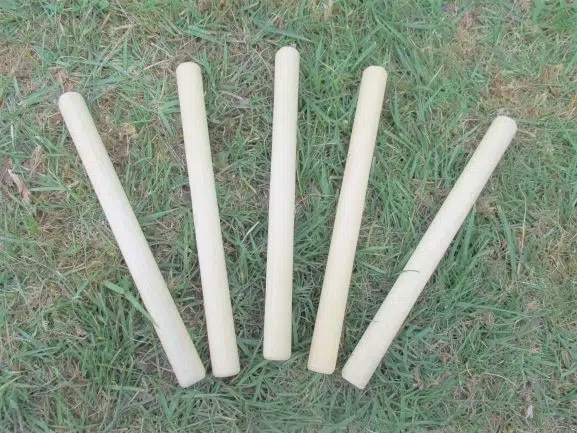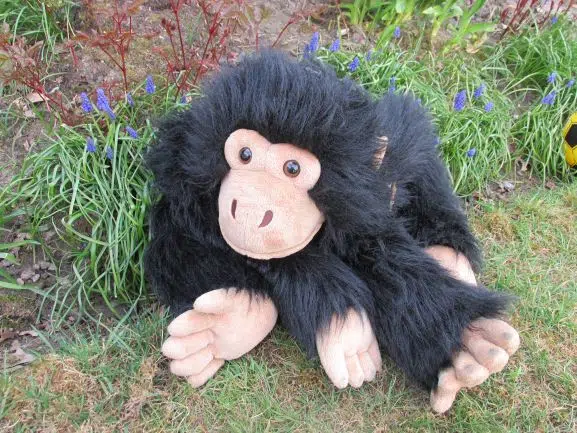Before children learn to write words, they need to orally segment. Segmenting is simply the skill of separating words up into their component sounds. For example, ‘pig’ becomes ‘p-i-g’. ‘Dog’ becomes ‘d-o-g’. It does not matter how the word is written. You are splitting up the sounds not the letters. So ‘chain’ would be split into three – ‘ch-ai-n.’
If you first want to find out the full version of what segmenting is, then check this article out.
There is possibly no more crucial step in early phonic learning.
If a child can segment orally (and also blend), then they will usually be able to quickly learn sounds and begin to read and write. There is not really much point in learning any sounds before they can do it, because without this skill they can’t do anything with the sounds they have learned.
But how do you teach oral segmenting?
Oral segmenting is best taught in a ‘little and often’ style. Five minutes a day is usually enough, and it is important that children only begin this aspect of phonic learning when they are ready. Oral segmenting can be taught through a range of games and activities that most children find engaging, enjoyable and rewarding.
Read on to find out my favorite 16 games for teaching oral segmenting…

First, when are children ready to orally segment?
Children are ready for this stage when they demonstrate some of the following skills:
a.) They can access fun listening games
b.) They understand and join in with simple games with musical instruments
c.) They have some simple awareness of alliteration, for example, they can hear the sound ‘s’ when you say ‘sssithery ssslippery sssnake!’ For the top ten alliteration activites, then check this article out.
d.) They have some simple awareness of rhythm, for example, they can hear how many syllables their name has in it, when ‘hitting it’ with a drum or claves. To find out some of the best rhythm games, then take a look at this.
e.) They can talk about the different sounds that different objects or parts of their bodies make
Some people also say that they should first have some awareness of rhyme, but I have always found this a bit of a red herring. Some children are fantastic at rhyming, but some simply are not and develop this much later, often only after they are able to read extremely well! In general, I would say don’t worry too much about whether a child has an understanding or not or rhyme at this point.
So then, here are my favourite tried and tested games and strategies to develop oral segmenting skills:
The strategies
1. Kung-fu segmenting!
This strategy is a real belter. It is great for just throwing in to any adult-led session, even just as a way to first engage them for thirty seconds at the start of a short carpet time before you read them a story or sing some songs.
Get the children in a circle, and then get them to stand up. I always get them to ‘bow to the master’. Just tell them you are the master and they will believe you!
Then give them a word, e.g. ‘pot’. Chose a kung-fu action, such as a block. I normally go for defensive blocks rather than aggressive moves. Get the children to do three slow blocks, and at the same time go ‘p-o-t.’ Then say ‘pot’ at the end (blending the word back together).
Repeat with other words and other kung-fu skills. You can try shields, or blocks with arms going high or across their bodies.
Just make them up, always doing three of an action whilst saying the sounds, and then blending them back into the word at the end. You may need to remind the children not to touch anyone else by mistake! Just do the moves in the air.
2. Dress the Baby
Any toy can be used for this game, but a baby does work very well. Some children are more excited by babies than pretty much anything else, and so they really help to inspire engagement.
This is a small circle activity. Put a baby in the middle of the circle, with some clothes round it, for example a hat, boots, a nappy, a coat and gloves.
I like to do a funky chant – Dress the Baby! Dress the Baby! (which goes to the tune of ‘Stop the Pigeon’ from Wacky Races!)
Then pick a child. The child has to say one of the pieces of clothing in sound-talk. For example a boot would be a ‘b-oo-t.’ If they can do it, then they can put a piece that piece of clothing on the baby. To make it easier, you can say all the pieces of clothing like robots before you start.
This is a great one for children to try by themselves in continuous provision after they have first been shown what to do.

3. Metal Mike
This is a classic segmenting game that is extremely well known, and also probably my favourite method for teaching segmenting. It just works extremely well!
You need a robot for this. A simple box or piece of cardboard covered in tinfoil or silver paper with a few eyes and buttons stuck on will work fine.
It’s good to give it a name like ‘Robot Rob’ or ‘Metal Mike’.
I also like to ‘switch it on’. Get a child to press the green button (which is a milk bottle lid), and the robot activates.
I like to bring it to life with sound effects and general robot noises and looking around at everyone!
The robot asks the children to show him their ‘robot arms’. They keep their elbows still, next to their bodies, and then move their hands up and down alternately.
Now give them a word. I prefer to do this using my normal voice (rather than a robot one), because you want the children to learn how to segment using their true voice, not some horrific robot sound. That would quickly become very annoying, and also be a barrier rather than a help in learning how to write!
Give them a word, and get the children to segment it into three sounds, using one robot arm movement for each sound. For example say ‘p-o-t. Pot!’
I always get them to repeat the word at least three times to start with. Repetition is the root of success in segmenting, as it is in most early phonics! Give them different words, and keep going.
This robot game is another strategy to use ‘little and often’. Bring the robot out for a couple of minutes every day and you will definitely see progress, and the penny starting to drop with most children.
This strategy can also be extended into continuous provision.
I have a robot that started life as a cardboard box, that now has a hole cut out for a mouth. Give the children some pictures of CVC words, and show them how to say each word like a robot and then post the picture into its mouth.
Feeding the robot is great fun, and some children will attempt this activity independently for a long time.

4. Three fingers game
This game is a great bridge between orally blending and segmenting and reading later on. If you’re not sure what blending is (and how to teach it) then take a look at this.
Get the children to show you three fingers. Now get them to ‘put’ a three-sound word onto their fingers, e.g. pot. For example, they put ‘p’ onto their ring finger, ‘o’ onto their middle finger, and ‘t’ onto their index finger. They point to each in turn, saying ‘p-o-t’, and then go back to their ring finger and sweep over the three fingers whilst saying ‘pot’.
Again, I always get the children to repeat the word at least three times to start with. Then repeat with different words.
This activity mimics the mechanics that are employed when children begin to sound out words.
The way to teach this is to get them to point to and say each sound in turn, and then go back to beginning and sweep under the whole word whilst saying it. The three fingers game introduces this concept in a simpler way, and sets up the physical system in the child’s minds.
Quick note – When I demonstrate this one to the children, I always do it ‘backwards’, i.e. right to left. This is because the children will copy you in mirror image – if you go right to left, they will go left to right which is of course what you want!
This will have benefits later on when they begin to read words
5. Use a sound puppet to tell sounds in sound-talk
Have a puppet and a bag of simple objects, each with three sounds in their names, e.g. a pin, a dog and a pig.
The puppet picks out an object and the children try to say the name of the item in sound talk. For example, the pin would be ‘p-i-n.
6. Use sound-talk in your daily routine
Model segmenting in context whenever you can. It is great to just ‘throw into’ your normal daily routine whenever possible. This gives it context, and makes it as simple as possible for the children to understand.
For example, you could say things like ‘Can you put on your c-oa-t. Can you do up your z-i-p.’ The children know what you are talking about, and so begin to understand that the sound talk is not just some abstract arrangement of sounds, but actually linked to the words they use and hear everyday.
7. Cross the river
‘Cross the River’ is a classic game that can be used in many different ways, and is great for maths skills as well as a wide range of phonic possibilities.
Select three volunteers, and give each of them a CVC object (e.g. a ‘can’, a ‘pig’ and a ‘bag’) Have a ‘river’ on floor, such as a piece of blue material.
One at a time the children have to segment their object, e.g. ‘c-a-n’, to be able to jump over the river. To make it easier practice saying all of the objects like robots before you begin the game.
This can also be a brilliant blending game. If you’re not sure whether to teach blending or segmenting first, then take a look at this.
8. Segmenting band
This is a great activity to throw into any music session when the children are all holding instruments.
Give the children a word, e.g.’cot’, and get them all to sound out the word whilst hitting each sound with their instrument – ‘c-o-t. Cot!’ This is another great game to play for just a minute or so, and little and often is definitely the way to go when the teaching of oral segmenting is concerned.
9. Use rhythm sticks

Rhythm sticks are one of my favourite early phonics resources. They are fantastic for experiencing a range of phonic skills, including segmenting.
The technique is similar to the segmenting band. Give them a word and get them to hit the sounds of the word on the rhythm sticks. E.g. ‘pot’ would become ‘p-o-t. Pot!’
Not rocket science, but very effective!
10. Jump the word
This is another activity that works well thrown into any other structured time or carpet-session.
Get the children to stand up and then give them a word, e.g. ‘tap’. They jump three times whilst saying ‘t-a-p. Tap! T-a-p. Tap!’ I always like to repeat any words that are being segmented or blended a few times.
Repetition breeds confidence which in turn generates success. This game could be done for clapping, clicking, blinking etc. Be creative!
11. Clapping from side to side
This is a more active version of the three fingers game. Give the children a word, e.g. ‘pot’. Moving from left to right, they clap three times (one clap to their left-hand side, one clap in front of them, and one clap to their right). AS they clap they say ‘p-o-t’.
Then they move their hands back to their starting point, before under the imaginary word from left to right again and say ‘Pot!’ Then repeat the process.
This emphasizes the mechanics involved in later reading a three-letter word.
12. Push lights – 3 in a row
Have three push-lights. Have some CVC pictures, and get them to pick one. Then they push the three lights in sequence whilst saying the sounds. E.g.‘P-a-n. Pan!’ Push each light as you say the sound.
A great activity for continuous provision
13. Feed the monkey
It doesn’t necessarily need to be a monkey in this activity; any other toy would work well also.
Puppets can act like magic on young children! To find out a full selection of puppet teaching games, then take a look at this.
Have some toy food and a picnic hamper next to the toy monkey. Say to the children that the monkey can only put the food in his hamper if we can say it in sound-talk, e.g. j-a-m. Jam!
Good foods to use in this game are things like ham, eggs, cake, milk and cheese. If children are getting good at these simpler words, however, why not have a go at longer words, for example ‘sandwich’!

14. Sick toy!
A toy of your choice is very sick and needs help! Have some objects that might help it and a list of the same things that you will read out. Good objects would be things like ‘pills’, ‘sling’, ‘bed’.
Say things like, ‘This poor dog might need this.’ (Hold up a pill). Who can say it in sound-talk? Children always love the opportunity to help those in distress.
15. Robber game
This is a souped-up version of the classic memory game – Kim’s Game. Have some objects in the middle of the circle, for example a box, a dog, a tin etc. Start with maybe about 5, but you can increase the number when the children get good at it.
Get the children to all close their eyes, and then pick a ‘robber’ who will come and steal one of the objects and hide it in an agreed place.
Everyone closes their eyes and the robber will try to say what’s been stolen in sound-talk.
If anyone can guess before he gives a clue, they can also say the object name in sound-talk.
This is a brilliant memory game, as well as linking to phonics. To find out my favorite 22 memory games, then take a look at this.
16. Jump the planets
In this game you are going to draw three circles in a row on the ground. These could be planets, or they could be lily pads, or currant buns or something else if you prefer.
The children pick a CVC picture out of a bag, e.g. ‘cup’. Then the children are going to jump across the planets, saying one sound each time they land on a planet – e.g. ‘C-u-p.’
Then they jump off the last planet into space and say the word, in this example ‘cup.’
Conclusion
Oral segmenting is one of the key skills of early phonics. If children learn to segment, then they will usually be able to quickly learn sounds and begin to write words.
It is best taught in a little and often way when they are ready. Just five minutes a day is fine.
Use a mixture of the activities in this article and your children should start segmenting confidently.
READ MORE
